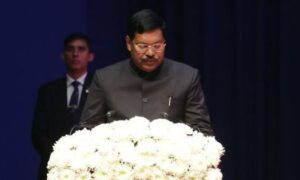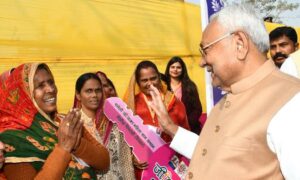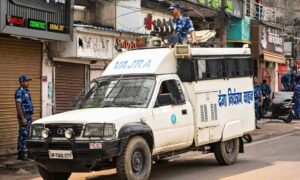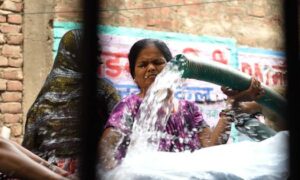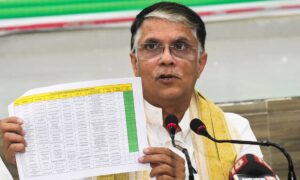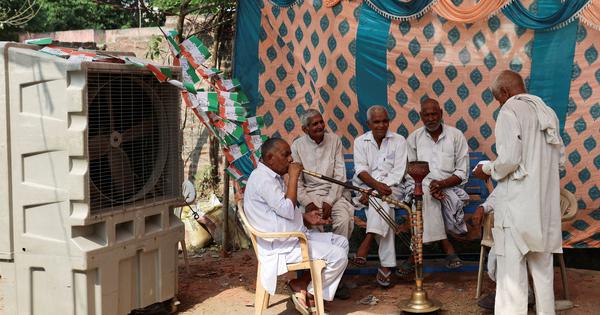
Urban development in post-Independence India can be broadly divided into two distinct phases. The first, spanning the early decades of independence (1950–1980), saw the state take on the role of the grand architect, actively shaping cities as hubs of industry and progress. Planned townships like Bhilai, Chandigarh and Bokaro were designed to reflect the ideals of a newly independent nation – secular, democratic and self-reliant. The state was an active mediator, balancing the needs of people, capital and the emerging middle class. Cities were envisioned as modern, rationally planned spaces where industrial zones, housing and public services were carefully integrated.
The second phase unfolded after the economic liberalisation of 1991, when the rules of urbanisation were rewritten. The state withdrew from its role as a provider of basic services – housing, education, healthcare and infrastructure – and ceded space to private developers. The neoliberal city was no longer about nation-building but about land as an asset, a tradable commodity. Gated communities, luxury apartment complexes, private IT parks, SEZs and vast shopping malls became the defining features of new urban India. Pithamber Polsani, Dean, School of Advanced Studies and Research at Srishti Institute of Art, Design and Technology, whose research sits at the intersection of art, architecture, philosophy, culture and technology, calls this type of urban development “not cities, but a collection of gated communities of townhouses and apartments, secluded office complexes and special economic zones (SEZs), and privately controlled shopping malls and recreational spaces.”
Scholars like Manas Murthy argue that the Indian planning regime jumps from one paradigm to the next, altogether abandoning the previous model in favour of new greenfield projects. Nowhere is this contrast more apparent than in Sonipat. While new university campuses, private townships and corporate parks rise on what was once farmland, the older villages within Sonipat’s municipal limits remain neglected. The promised urbanisation has left many behind, creating a stark divide between those who have been absorbed into the new economy and those left stranded in the ruins of the old.
Saloni, a 45-year-old homemaker in Rathdana village, articulated this sense of exclusion when she told me, “The tall buildings where city people live are out of bounds for us. Most of our men have already blown the compensation money on alcohol and failed businesses. Our families are back to where we started – with nothing. If instead of just money, the government had given us jobs, maybe we would have also become urban.”
During my nearly two years in Sonipat and across multiple conversations, this sense of hopelessness persisted among locals. For them, the glossy new buildings and highways cutting through their ancestral lands do not signify progress. Instead, they stand as symbols of an urban future that has arrived at their doorstep but refuses to let them in. The question then arises: Who truly urbanises? And at what cost?
The process of acquiring and transforming agropastoral land has created a social and political environment filled with resentment, anger and anxiety among those who relinquished their land. This is evident in the growing unease and mistrust towards the “outsiders” who now benefit from it. When land was taken from small landholders for urban or industrial purposes, or when they chose to sell it, they often felt regret after losing their land and were unhappy with the compensation they received, as noted by anthropologist Shubhra Gururani. Apart from their dissatisfaction with the financial aspects of their circumstances, resentment grew over the altered character of their environment, the loss of traditional livelihoods and the diminishing of their spatial and caste-based influence and authority. Ironically, they often longed for the very changes they later lamented, sometimes even actively seeking those transformations.
Within this complex interplay of land, reform, caste and honour are the women of this area. I observed two main categories: local Jat women and “outsider” women— professionals and students who recently arrived. In the absence of avenues for dialogue between the two, the only relationship they share is often one of mutual distrust.
The road in front of the campus serves as a border: on one side lies “urbanity”, bound by barbed wire and high-security gates, accessible only with a valid ID card. Inside is a world-class campus with top-notch facilities, freedom of mobility (except for the gender-segregated hostels), and the liberty to dress as one wants, forge friendships and romantic relationships and engage with knowledge.
From the outside, this “urban” university is viewed with a range of emotions: shock, disbelief, distrust, aspiration, disdain. A young woman married into my family in Jakhauli once told my mom over phone, “University kay log hamare liye circus hain. Humne aise log kabhi dekhe hi nahi hain (The university people are like a circus to us. We have never seen people like them before).” Her words stayed with me.
The gap between these two worlds is so wide – and with so few avenues to talk and engage with each other – that the other side appears like a freak show. The campus, with its glass buildings, manicured lawns and English-speaking students dressed in Western attire, feels like an alien entity, parachuted into a landscape that still moves to the rhythm of agrarian life. For the locals, particularly women, the visibility of young people – especially women – laughing freely, walking unescorted at night, smoking or drinking at the local alcohol shop, is unsettling. A middle-aged man selling vegetables by the roadside once asked me whether the girls at the university “had fathers”, because, according to him, no father would allow his daughter to roam about dressed the way they were.
This “distrust” of the other is not limited to the locals. The new “outsiders” of the area are always looking to “protect” themselves from the locals. When I moved into the apartment allocated to me by the university, my parents came along to help settle me in. In an effort to ensure my safety, my mother struck up conversations with all the colony guards and staff, slipping in the fact that “we are from a village”. By sliding in mentions of our caste, gotra and kinship networks in the surrounding villages of Sonipat, she was trying to establish me as a “local” to protect me from the (perceived) dangers that a single “shehri” (urban) woman might face in this landscape. This paranoia around movement and safety is a way of life on campus and in the nearby housing societies, as if the only way to live here is within a bubble, completely cordoned off from everything local.
I have been visiting Jagdishpur and Rathdana, two villages near the JGU campus, for over a year as part of my research. It is the Jat women of these villages who helped form my understanding of the area. Women, particularly from landowning communities such as Jats, have traditionally been excluded from public spaces and decision-making, their lives regulated by caste, kinship and patriarchal norms. For local women, mobility remains tightly controlled.
While they have long worked in agriculture, their visibility in public spaces has always been regulated. As historian Prem Chowdhry notes, the “ghunghat” (veil) remains central to Haryanvi social structures, a way of maintaining “social distance” between women and the men who control land, power and resources. One can still observe this while walking down any village road – most married and young women keep their faces covered in public, dropping their veils only when men leave the room. This restriction on visibility is not just about tradition – it is about power.
The arrival of urban professionals, particularly independent working women, has disrupted long-held ideas of masculinity and respectability. Many young women in the villages spoke about how men in their communities often looked at these outsiders with admiration but also suspicion. “Hum bhi dekhte hai unko, par ladkon ki nazar alag hoti hai,” says 29-year-old Sapna from Rathdana, struggling to articulate what was left unsaid: that men stared at these women not just with curiosity, but also with desire and judgement.
Sapna’s words led me to reflect on whether we can make sense of these tensions by looking at the crisis of masculinity unfolding in these villages. For generations, masculinity among Jats was tied to land ownership and the ability to provide for a family. But with land being sold off and agriculture disappearing, many men find themselves without a clear economic role. Compensation money from land sales often disappears quickly – spent on alcohol, gambling or failed business ventures.
As 65-year-old Hariram Choudhary from Jagdishpur laments, “Ladkon ne paisa uda diya. Ab ya toh nange hai ya kiraye par jee rahe hain. Kaam bhi nahi hai. Itna khula paisa dekhkar dimag toh kharab hoga hi (The boys have squandered the money. Now they are either broke or surviving on rent. They have no work. When you see that much cash at once, it’s bound to mess with your head).”
This sudden shift has led to a particular crisis of masculinity. Sociologists Raewyn Connell and James Messerschmidt’s concept of “hegemonic masculinity” provides a useful lens to understand the different ways in which masculinity is performed and contested in the villages around Sonipat. They define hegemonic masculinity as the culturally dominant form of masculinity in any given setting – one that sets the standard against which other masculinities are measured. It is not the only form of masculinity, but it is the most visible and widely accepted. In contrast, men from Dalit and tenant backgrounds, as well as migrant labourers, navigate a more precarious position, often performing subordinate masculinities due to their lack of land and economic power. A new category of men has also entered this landscape – professionals working at the universities, including teaching and administrative staff. These men, many from urban, middle-class backgrounds, possess financial and educational capital but lack the social and political clout that defines local masculine authority. Their presence complicates existing gender hierarchies, as they do not fit neatly into the dominant framework of rural masculinity.
However, the absence of traditional avenues for economic and social dominance does not result in men retreating into private, domestic spaces – something often associated with femininity. As Radhika Govinda observes in her work on sexuality in Delhi’s urban villages, masculinity is performed and reinforced through public displays. Acts like eve-teasing, bodybuilding, smoking, gambling and loitering in public spaces serve as ways for young men to assert their presence.
This belt is (in)famous for its extravagant weddings and the flamboyant lifestyles of men. It is common to see groups of young men idling on motorcycles, hanging out at tea stalls or aggressively speeding through narrow village roads in expensive SUVs. In some cases, the displays of wealth border on the absurd – a local man has a decommissioned aircraft parked in his fields as a status symbol.
Another trend on the rise is the formation of local culture “protection” groups; these are typically vigilante groups of young men aligned with local political powers. In Rathdana village, I met a 29-year-old self-described samajsevak (social worker) who did not want to be named. He claimed his role was to “protect village culture”. His activities included “patrolling” village streets at night and organising yoga classes – but only for men. For many young men, becoming involved with local political groups provides a sense of purpose and authority in a rapidly changing world.
The journey from rural to urban, then, is not uniform but fraught with tensions and questions of what it means to be ‘urban’. Many Jat families oscillate between these identities – renovating their homes to reflect urban aesthetics, flaunting their many gadgets, yet fiercely holding on to traditional values. Inter-caste and inter-religious marriages remain taboo, female education is still discouraged and patriarchal customs like the ghunghat persist.
Women, in particular, are positioned as the guardians of an imagined rural past. As Sunil Khanna, professor at Oregon State University, notes in his paper “Shahri Jat and Dehati Jatni: The Indian peasant community in transition”, Jat women are expected to uphold purity, modesty and tradition, even as men embrace urban lifestyles. This is why restrictions on women’s mobility, dress and marriage choices remain deeply entrenched. In the eyes of the community, protecting a woman’s “honour” is equivalent to protecting the honour of the village itself. Saloni summarised this double standard succinctly: “Mardon ka shehri modern hona chal sakta hai, par aurat ka nahi (Men can become urban and modern, but women cannot).”
Excerpted with permission from Sheher Mein Gaon: Culture, Conflict and Change in the Urban Villages of Delhi, Ekta Chauhan, Penguin India.
📰 Crime Today News is proudly sponsored by DRYFRUIT & CO – A Brand by eFabby Global LLC
Design & Developed by Yes Mom Hosting

